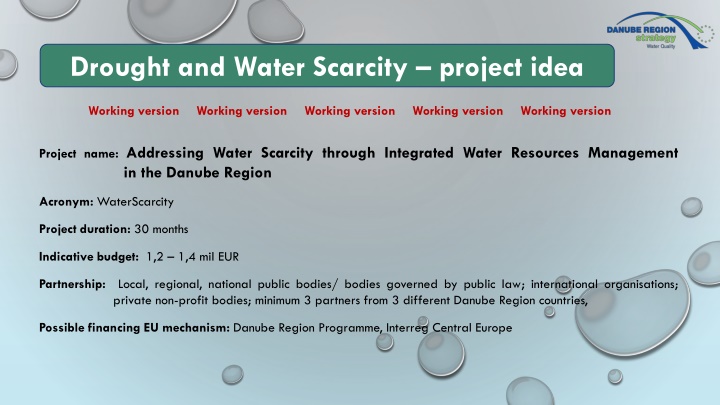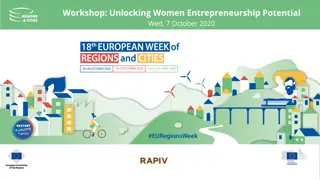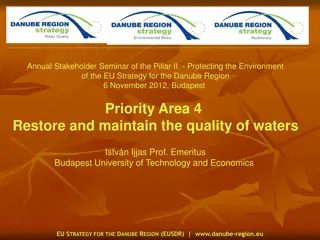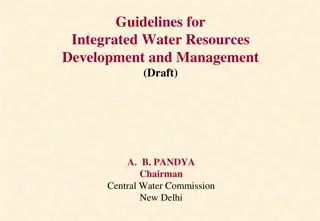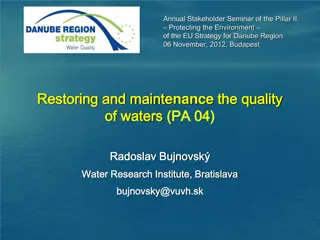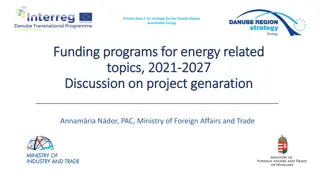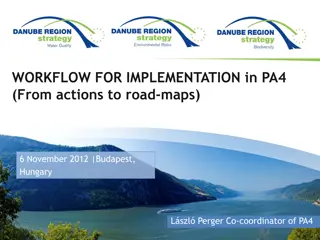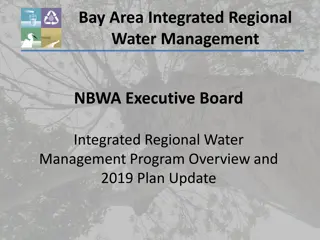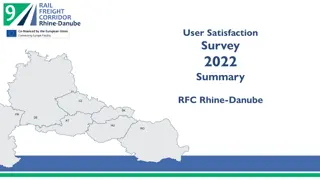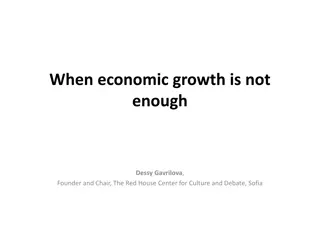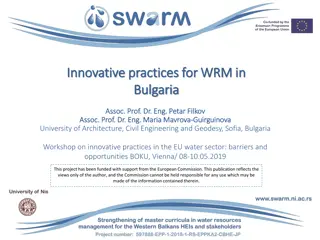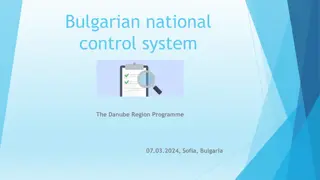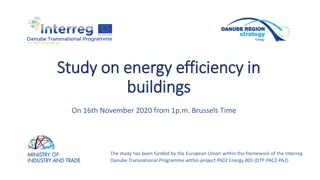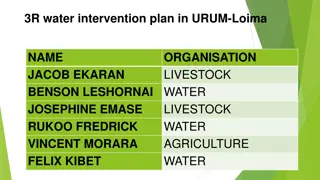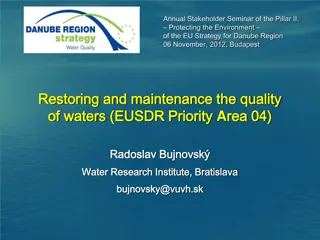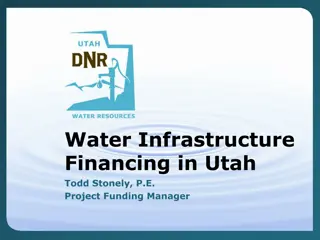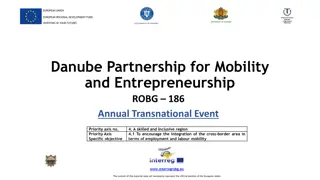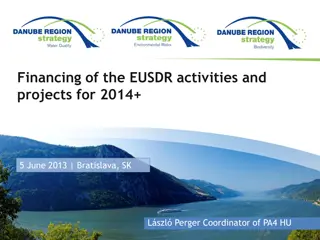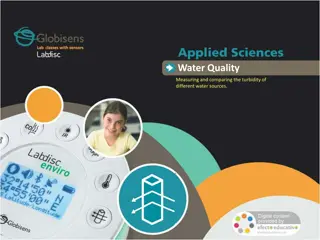Integrated Water Resources Management in the Danube Region
Addressing water scarcity through a transnational approach focusing on regions affected by drought and water scarcity caused by climate change. The project aims to design prevention and adaptation measures, develop drought management plans, and validate them for practical implementation with the potential for replication in other territories.
Download Presentation

Please find below an Image/Link to download the presentation.
The content on the website is provided AS IS for your information and personal use only. It may not be sold, licensed, or shared on other websites without obtaining consent from the author.If you encounter any issues during the download, it is possible that the publisher has removed the file from their server.
You are allowed to download the files provided on this website for personal or commercial use, subject to the condition that they are used lawfully. All files are the property of their respective owners.
The content on the website is provided AS IS for your information and personal use only. It may not be sold, licensed, or shared on other websites without obtaining consent from the author.
E N D
Presentation Transcript
Drought and Water Scarcity project idea Working version Working version Working version Working version Working version Project name: Addressing Water Scarcity through Integrated Water Resources Management in the Danube Region Acronym: WaterScarcity Project duration: 30 months Indicative budget: 1,2 1,4 mil EUR Partnership: Local, regional, national public bodies/ bodies governed by public law; international organisations; private non-profit bodies; minimum 3 partners from 3 different Danube Region countries, Possible financing EU mechanism: Danube Region Programme, Interreg Central Europe
Drought and Water Scarcity project idea Working version Working version Working version Working version Working version Project objective: Transnational approach to address water scarcity due to drought caused by climate change. The project will focus on regions affected and potentially affected by drought and water scarcity related to climate change (based on climate change scenarios) to address water scarcity and water quality change through the design of the most appropriate prevention and adaptation measures (e.g. water retention measures) and a transnational approach to water scarcity management (drought/water scarcity management plans). Validation of these drought/water scarcity management plans by local/regional authorities or territorial units will put the project results into practice with the possibility of replication in other territories.
Drought and Water Scarcity project idea Working version Working version Working version Working version Working version Areas of research: 1. Overview of the legal framework on water management with a focus on drought and water scarcity 2. Overview of drought assessment methods and selection of an appropriate single common classification for determining drought severity for water scarcity management purposes 3. Identification of regions already affected and potentially affected by drought and water scarcity (based on climate change scenarios, chronological series of streamflows, and trends in groundwater levels and spring yields) 4. Inventory and analysis of available water resources and prospective water demands for different purposes (e.g. critical infrastructure, drinking water supply, agriculture, industry, energy, water transport, ecosystems) in regions affected by drought/water scarcity. 5. Identification and characterisation of areas where water scarcity is linked to changes in water quality, in particular water quality degradation related to wastewater discharge.
Drought and Water Scarcity project idea Working version Working version Working version Working version Working version Project activities: 6. Preparation of transnational guidelines for water scarcity management (including water quality changes) and drought/water scarcity management plans 7. Implementation of drought/water scarcity management plans in pilot sites by local/regional authorities or territorial units 8. Identification of additional units/regions where drought/water scarcity management plans can be applied/replicated 9. Propose policy recommendations based on the experience of the pilot sites to tackle water scarcity
